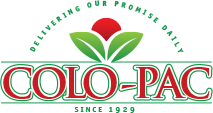
The term “banana” refers to a wide variety of fruit produced by members of the plant species Musacae. The most common variety of bananas on the market are Cavendish bananas which are long, narrow, bright yellow in color and sweet. Bananas and plantains are the same species of plant, but are different cultivars. Generally speaking, plantains are starchier and less sweet and are generally used for cooking whereas bananas are sweeter, softer, and eaten raw. Bananas are native to Indonesia, Australia and Malaysia and were cultivated as early as 8000 BC. From its origin in the Indian Ocean, bananas spread to the Middle East and West Africa. Bananas weren’t introduced to Europe until Muslims migrated from the Middle East to parts of Spain in the 15th century. Even in the Victorian era, bananas were relatively unknown in most of Europe. Jules Verne introduced many Europeans to bananas in his novel, Around the World in 80 Days. Once Europeans developed a taste for bananas, they introduced the fruit to their colonies around the world, especially in the Caribbean and Brazil. Bananas are still a major crop in Latin America, earning several South American counties the moniker “Banana Republic.” Today, bananas are wildly popular around the world, and they are the most popular fruit in the United States. Bananas are an important staple food in many developing countries because they are cheap and easy to cultivate.
A raw banana is a great way to start off the day or as a healthy, sweet treat for desert, but there are plenty of other ways to incorporate the banana in meals. Add bananas to smoothies to add creamy texture and sweet flavor. Bananas are a perfect ingredient for almost any dessert, including puddings, parfaits, banana cream pies, banana boats and trifles. Baking can incorporate bananas as well in recipes like banana bread and banana nut muffins. Bananas foster is a wonderful dessert dish, in which whole or halved bananas are sautéed in butter, rum, cinnamon, sugar. The sautéed bananas are flambéed to burn off the alcohol and caramelize the sugars in the fruit. The cooked bananas are served over ice cream, typically vanilla. Banana chips are a great side dish or snack and can be made either by first slicing the banana into medallions and then either dehydrating them or frying them.
Pick bananas that are free from breaks in the skin. Ripe bananas will be almost entirely yellow. Green skin indicates that a banana is not quite at peak ripeness, and it will be starchy and not quite as sweet as a fully ripe one. Keep bananas at room temperature, and they will keep for about a week. To slow the ripening of bananas store them separately. A cardboard six-pack carrier is perfect for this.. Bananas naturally produce ethylene gas which encourages fruits to ripen, separating them reduces their exposure to the gas slowing the ripening process. You can also use bananas to ripen other fruits more quickly. For example, store under ripe tomatoes in close proximity to bananas to speed up the ripening process. When bananas become black and mushy, throw them away. Remember to always wash fruits and vegetables before use.


 BACK TO PRODUCTS
BACK TO PRODUCTS